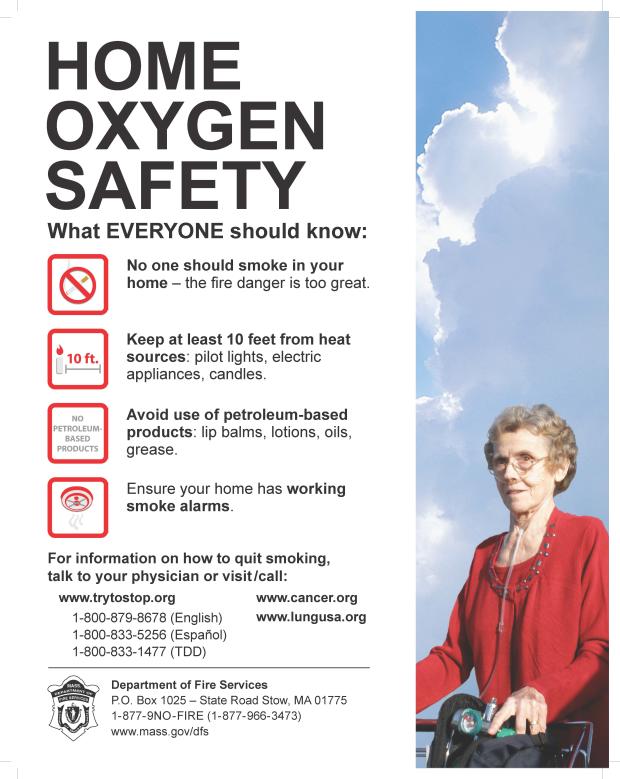Home Oxygen Safety
Home Oxygen Safety
Using home oxygen increases the risk of fires and burns. When oxygen is used in the home, the amount of oxygen in the air, furniture, clothing, and hair goes up, making it easier for a fire to start and spread.
As more and more people are bringing medical oxygen into the home, they need to understand the new fire risks they also bring into the home. Physicians and other caregivers play a key role in educating patients about the safe use of oxygen.

If you or a loved one uses home oxygen
- Do not smoke
- Make sure the home has working smoke alarms. Test them monthly.
- Have a home fire escape plan with a minimum of 2 ways out of every room and an outdoor meeting place. Practice the plan at least twice a year.
- Keep oxygen and tubing 10 feet away from heat sources such as candles, matches, lighters, heaters, wood stoves, electric razors, hair dryers, cooking stoves, and smoking materials.
- Do not use petroleum-based products such as oil-based lip balms or lotions. They catch fire easily.
Risks of home oxygen
- Using home oxygen increases the risk of fires and burns.
- Using home oxygen increase the amount of oxygen in air, furniture, bedding, clothing and hair, making it easier for a fire to start and spread.
- When more oxygen is in the air, fires burn hotter and faster.
- There is no safe way to smoke around home oxygen. Turning off the oxygen is not enough because your clothes, hair, bedding and the tubing are oxygen-enriched.
Until you can quit smoking, if you must smoke:
- Disconnect the oxygen
- Wait ten minutes
- Go outside to smoke
This is not a safe way to smoke, but it allows time for oxygen to come off your hair and clothes, and lowers the danger of fire.
More information can be found here.
https://www.mass.gov/fire-safety-for-the-public

